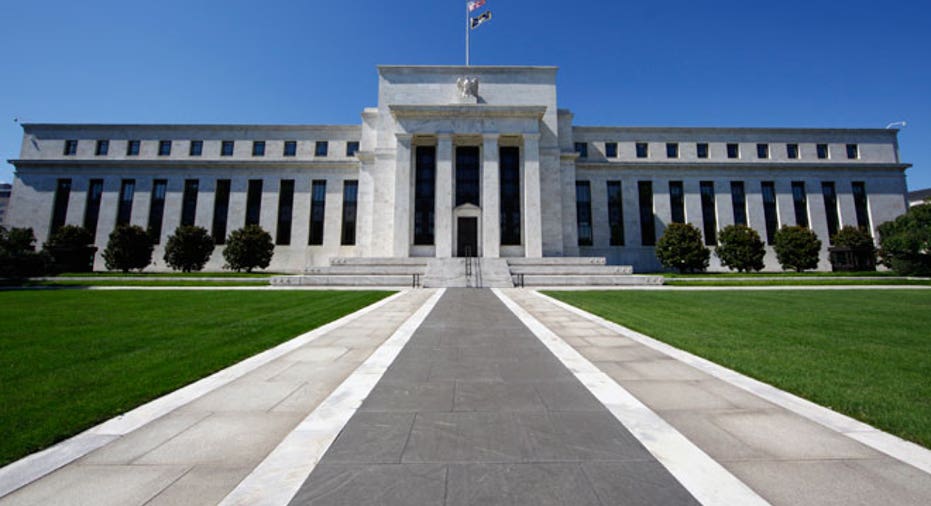Federal Reserve Looms Large, But No Action Expected

Federal Reserve policymakers will likely announce on Wednesday that they will keep buying bonds at a monthly pace of $85 billion, while keeping their options open to scale back the program later this year if the U.S. labor market continues to improve.
Economic data since the 19 officials met in May has been mixed. Employment growth was steady and consumers kept spending despite the drag of tax hikes and government spending cuts. But inflation slowed further beneath the Fed's 2% target.
The policy-setting Federal Open Market Committee will announce its decision at 2 p.m. (1800 GMT). Fed Chairman Ben Bernanke will hold a news conference 30 minutes later.
"Should the outlook improve as the Fed expects, then it may continue to lay the groundwork for a tapering of purchases at upcoming FOMC meetings," Michael Gapen, an economist with Barclays in New York, said.
"However, should the data evolve more in line with our forecast, then we see the Fed as refraining from tapering until the first quarter of 2014," he wrote in a note to clients. Barclays currently expects weaker 2013 GDP growth than the Fed has forecast.
Bernanke will likely take care to draw a bright line between the possibility of a slower pace of bond purchases, which would still add stimulus to the economy, and an actual tightening of monetary policy that would take it away.
The U.S. central bank has held overnight interest rates near zero since December 2008 while more than tripling its balance sheet to around $3.3 trillion with its bond buying.
Economists expect rates to stay on hold until 2015, but the view of the lift-off date in financial markets has shifted forward since Bernanke fired up speculation last month that the Fed could soon curb its asset buying.
The chairman is also likely to be quizzed on his future plans after President Barack Obama hinted in an interview on Monday that Bernanke was ready to step down once his current term expires on Jan. 31, 2014.
INFLATION WATCH
Any change in how officials describe inflation that places more stress on recent low readings could signal a desire to push back expectations of bond tapering. Bernanke's comment on May 22 that the Fed could begin to curtail purchases at one of its "next few meetings" rocked financial markets and drove bond yields sharply higher.
The consumer price index was up 1.4% in May from a year ago. But the PCE price index, the Fed's preferred inflation gauge, rose just 0.7% in the 12 months through April, the most recent reading, less than half the Fed's target.
The Fed in recent months has played down the threat that low inflation could be a harbinger of a damaging deflation and has argued that inflation would head back toward the 2% goal.
Still, many economists think the central bank would be loath to ease up on its stimulus until inflation turns higher.
In its last statement on May 1, the Fed acknowledged inflation had been running "somewhat below" its goal, but noted that longer-term inflation expectations had remained stable.
"The most important moving part is how the Fed characterizes inflation. At the May meeting, they studiously avoided discussing the drop in inflation," Vincent Reinhart, Morgan Stanley's chief U.S. economist, said.
Minutes of the May meeting revealed a wide split among policymakers. A "number" of the 19 supported slowing the pace of bond purchases as early as this week's policy meeting. But "most" wanted evidence the recovery was proceeding before scaling back; this group also argued for the Fed to be ready to raise the pace of purchases if needed.
In the end, the Fed inserted language into its statement to explicitly acknowledge that bond buying could be dialed up as well as down if the recovery faltered as it sought to preserve its policymaking flexibility.
No change in that language is expected on Wednesday.
The central bankers will also release a quarterly summary of economic projections, including forecasts for growth, inflation and unemployment, plus when they each think the Fed should start raising interest rates.
The Fed says it will not lift rates until unemployment hits 6.5% or lower, provided that the outlook for inflation stays under 2.5%. The U.S. jobless rate in May was 7.6%, and economists do not expect the threshold to be met for a couple of years.